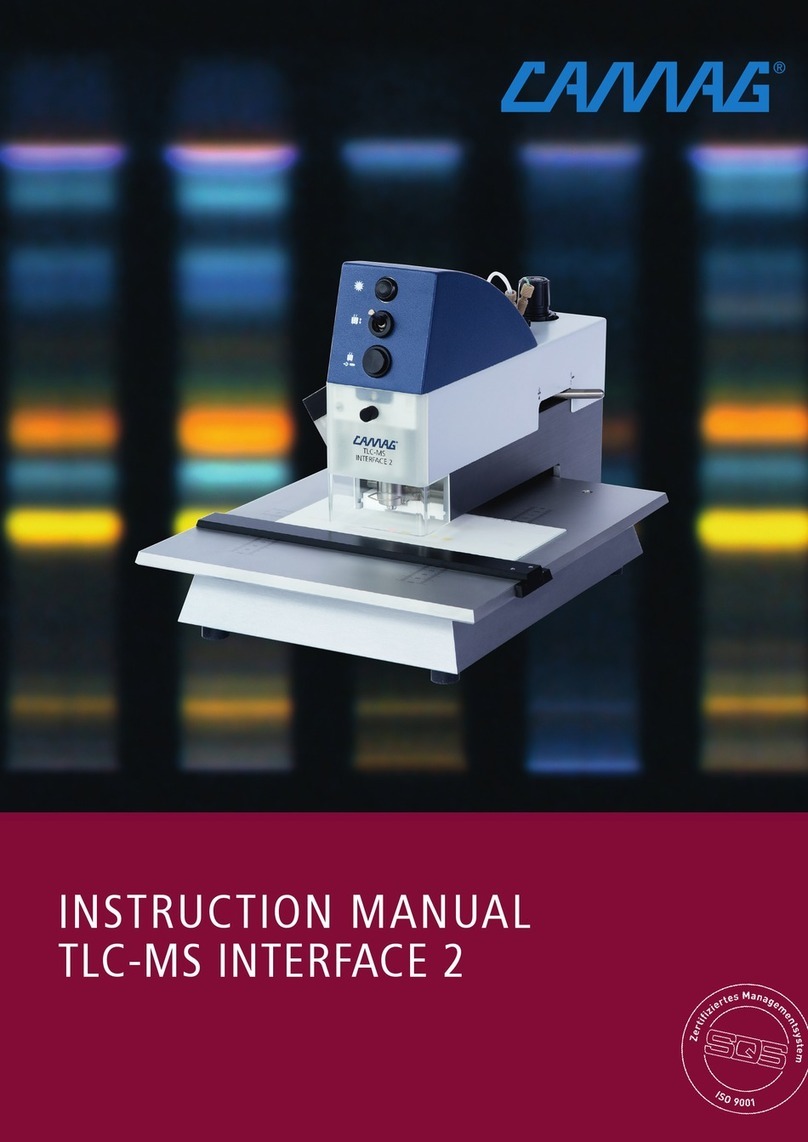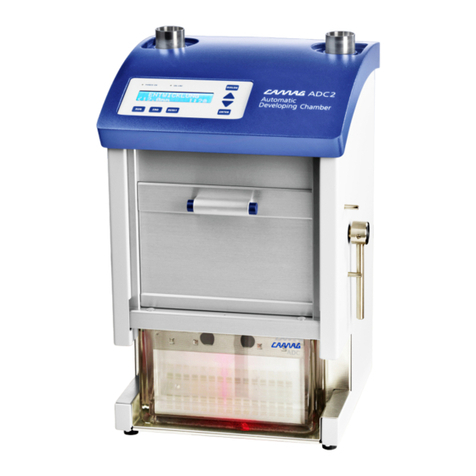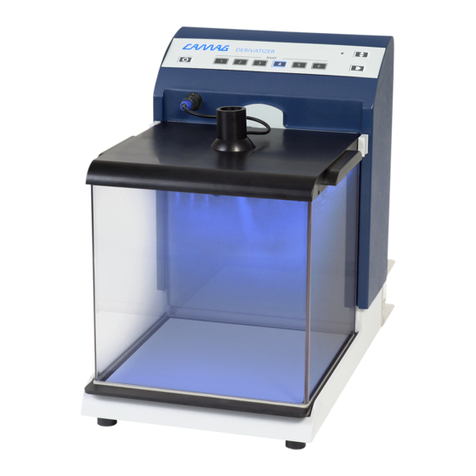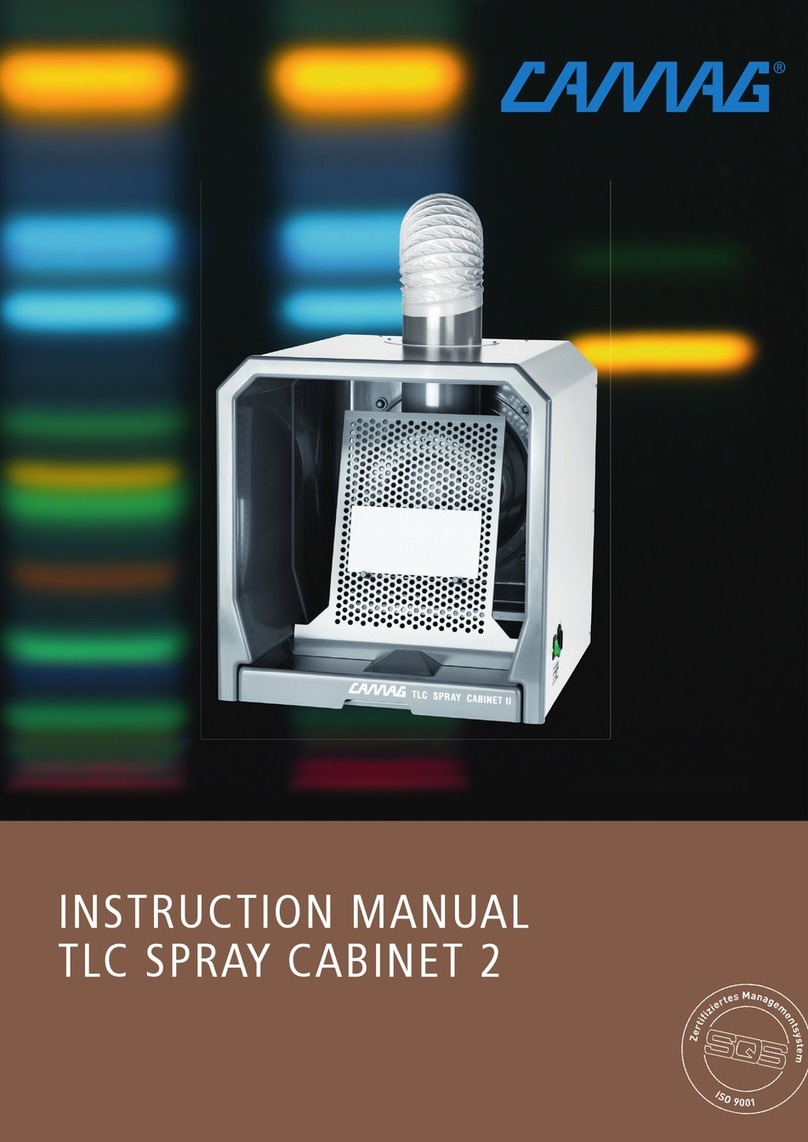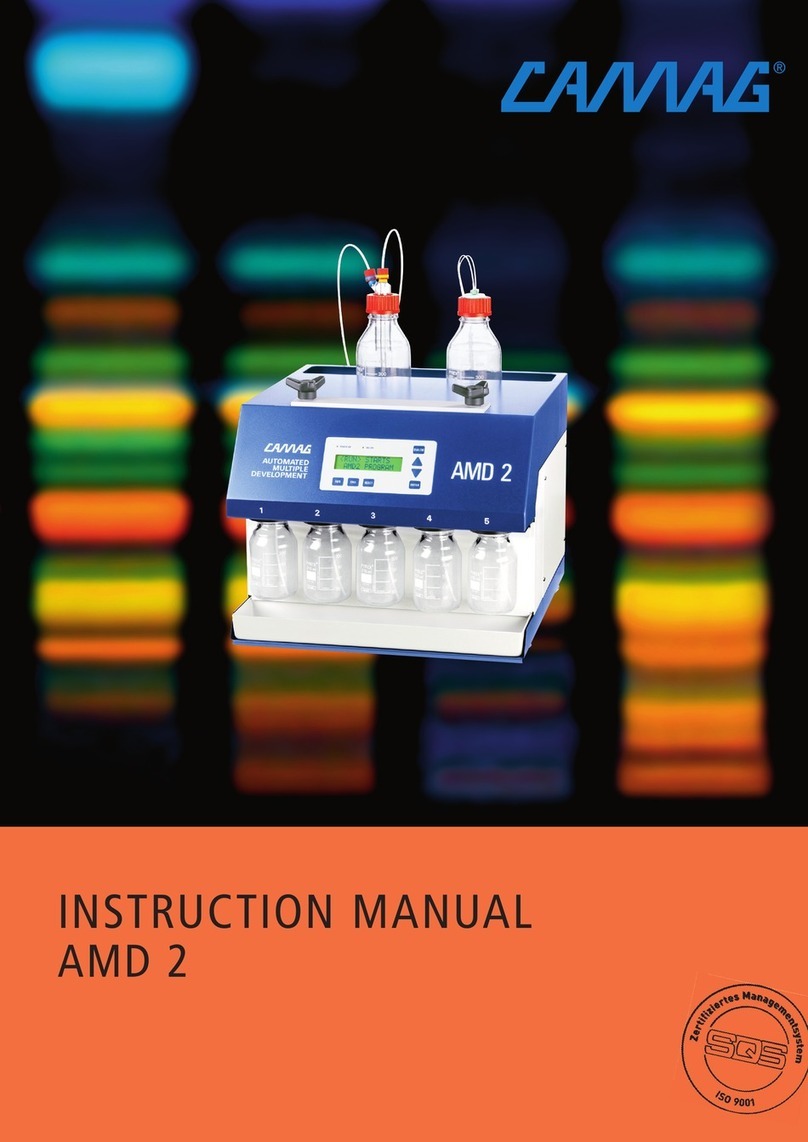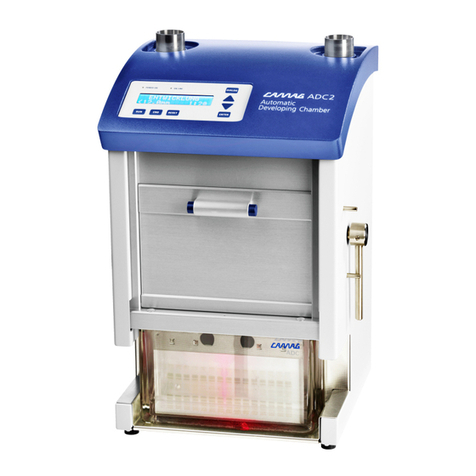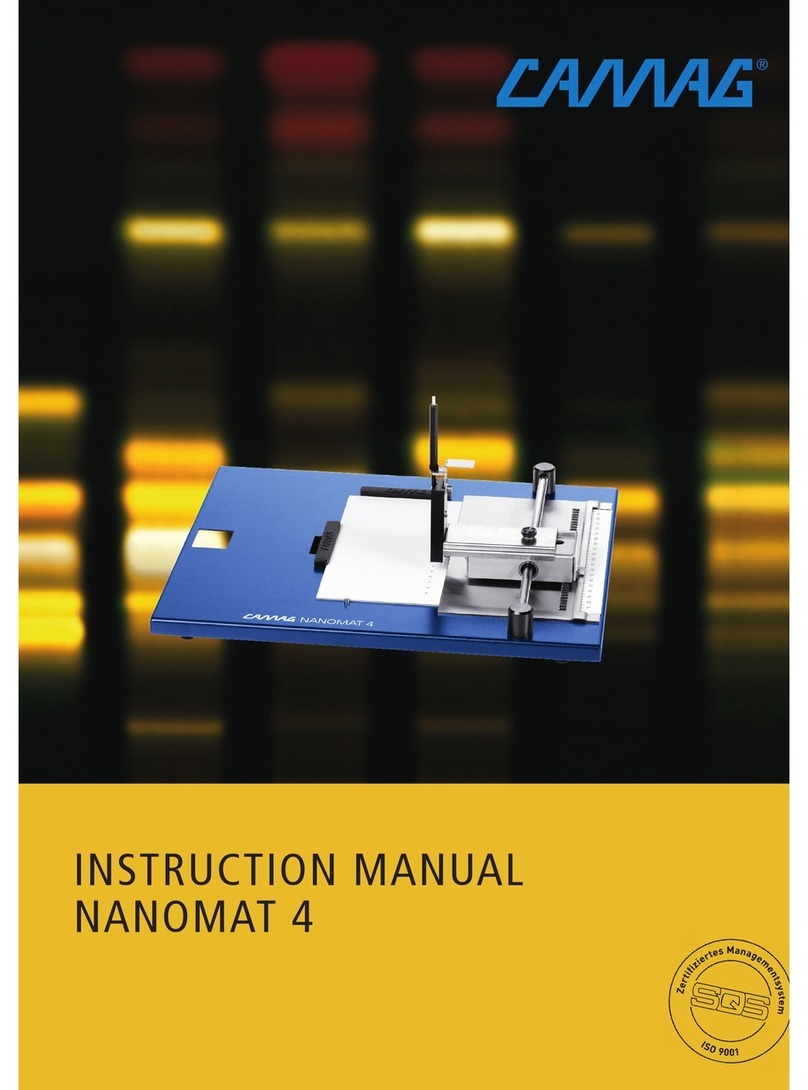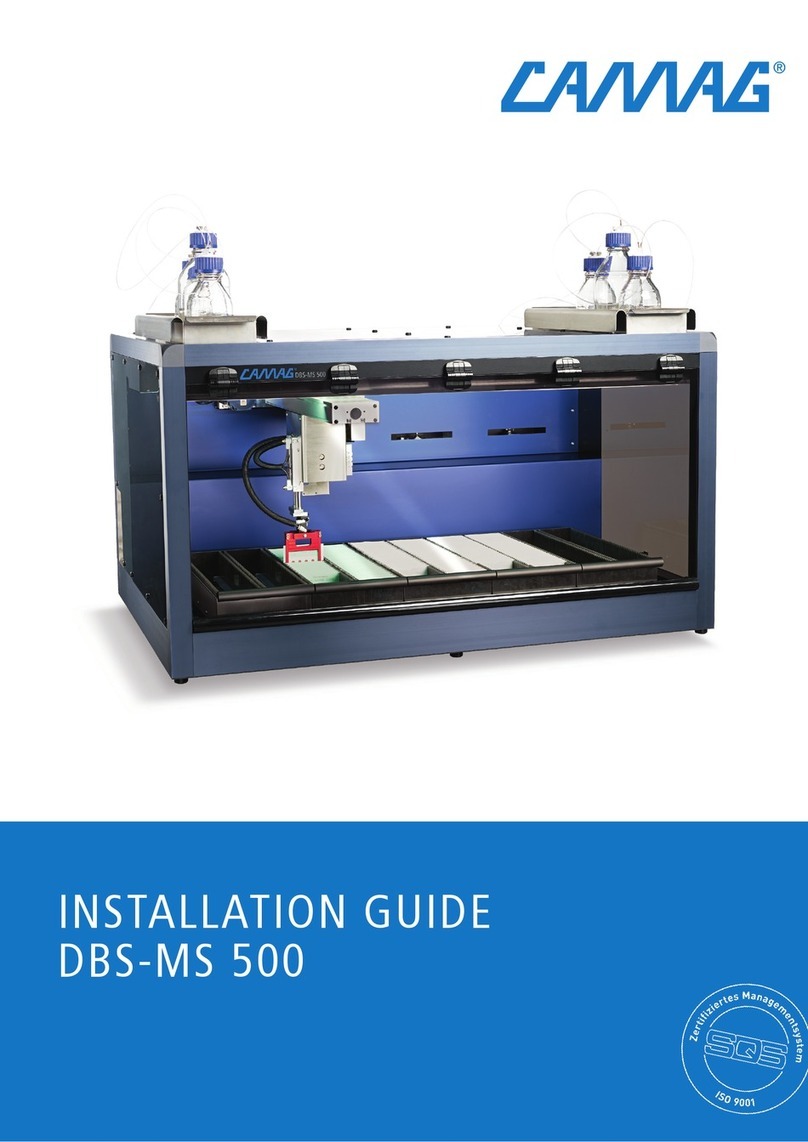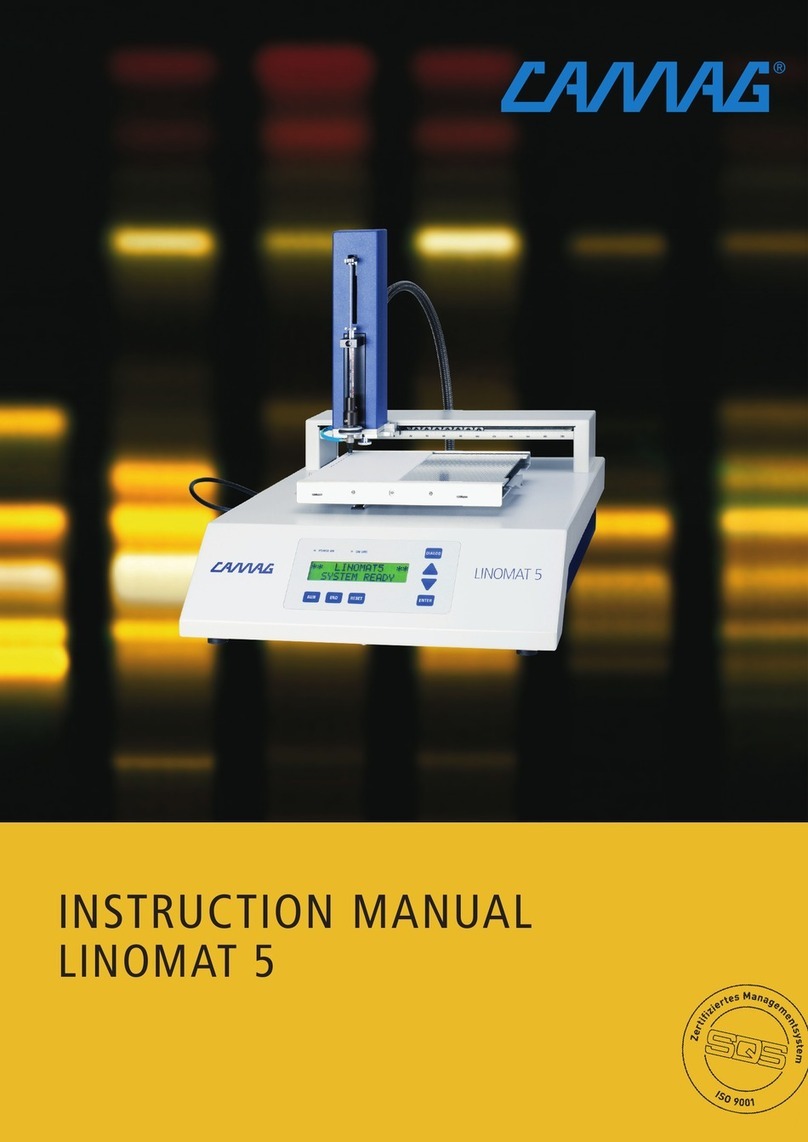
Instruction Manual, November 2017 3
(IP 20). Furthermore, this device has passed the CAMAG Quality Assurance tests
and has been delivered in safe operation condition. For detailed instrument data,
see the chapter “Technical Data”
•Attention: For safety reasons the instrument may only be used for the purposes
described in the operating manual
•To avoid injury use adequate safety equipment (protective goggles, gloves etc. if
applicable) when working with the instrument
•Before first operation, check whether the voltage shown on the instrument
matches your local mains voltage. The power cord may only be connected to a
grounded, fused (not higher than 16A) outlet. Do not use extension cords without
ground contact
•When working with the fluids of the instrument, be sure to take appropriate
precautions (protect your eyes from direct contact with liquid)
•The instrument may be used only by properly trained laboratory staff
•The instrument may not be used in rooms with an explosion risk
•The instrument contains highly sophisticated electronics. It may be operated only
in a non-condensing atmosphere in the temperature range outlined in the chapter
"Technical Data". Before installation and use, the instrument should be acclimated
properly
•Use a damp lint-free cloth for cleaning the instrument surface. Do not employ
aggressive detergents
•Protect yourself and the instrument from electrostatic shock which can cause
damage to the electronic parts
•Only authorized personnel may open the instrument. Service and repair are only to
be performed by trained specialists. Use spare parts and consumables supplied by
CAMAG only. The warranty is voided if parts from other sources are used. Check
the service manual before you start service to reduce product-specific risks
•The power cord has to be removed before the instrument is opened. It is not
permitted to work on an instrument that has been opened and is connected to the
power supply
•Use only the original power cord type that was delivered with the instrument
•If the instrument is found to be defective, it must be switched off and steps must
be taken to ensure that it cannot be switched on by mistake
•Carry out all safety checks and preventive maintenance as recommended by the
manufacturer in order to assure your personal safety and the full functionality of
the instrument. Have an authorized service specialist perform any service not
described by this manual
